 Image search results - "Buddha" Image search results - "Buddha" |

One of Japan's three Big Buddhas (after Nara and Kamakura). The statue was built by local coppersmiths in 1932, taking 30 years to complete.
|
|

The Takaoka Daibutsu stands 15.85 meters high, weighing 65 tons. Japan's largest copper statue. Takaoka, Toyama
|
|

In fall 2007, it underwent major renovation.
|
|
|

Ritto History Museum, stone buddha replica. 栗東歴史民俗博物館
|
|

Stone buddha
|
|

Ritto History Museum's buddha statues 栗東歴史民俗博物館
|
|

Way to the stone buddhas in Usuki.
|
|
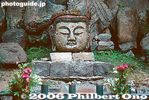
Buddha head before reattachement in 1994. 古園石仏
|
|
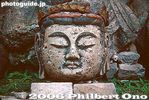
Closeup of Buddha head before reattachment in 1994. Usuki, Oita. 古園石仏
|
|
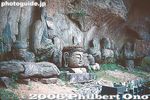
Stone buddhas in Usuki, Oita. 古園石仏
|
|

古園石仏
|
|

Stone buddhas, Usuki, Oita.
|
|
|
|
|

Stone buddha enclosed by a building. 山王山石仏
|
|
|

Admission was charged to see the hidden Buddha.
|
|

This smaller Buddha was used to obstruct the view of the hidden Buddha from non-paying visitors.
|
|

The line to see the hidden Buddha.
|
|

It didn't that long to see the hidden Buddha.
|
|

Ishiyama-dera's hidden, giant Buddha (Kannon) is visible through the altar.
|
|

Normally, you cannot see this Buddha through the altar since the Buddha is housed behind closed doors. We were allowed to walk behind the altar to see the giant Buddha in its shelter with the doors open. A large, impressive Buddha. No photos were allowed.
|
|

The large, hidden Buddha also had smaller Kannon statues inside. These were also displayed.
|
|

Like most major Buddhist temples, Sensoji temple in Asakusa holds its Hanamatsuri to mark Buddha's birthday on April 8. Hana Matsuri sign at Kaminarimon Gate.
|
|

A symbol of Hanamatsuri (literally "flower festival") is the white elephant which is paraded around. This one stands ready at Kaminarimon Gate. It has a baby Buddha statue on top.
|
|

When the Buddha was born, he walked seven steps and said, "I am my own Lord through Heaven and Earth," and pointed one hand to Heaven and the other to Earth.
|
|

Children from the local kindergarten walk toward Kaminarimon Gate from where they will pull the white elephant.
|
|

Every April 8, if it's a nice day, I try to visit a different temple in Japan to see Hanamatsuri. This year I decided to see it in Asakusa.
|
|

Sensoji temple was renovating its roof so it is covered with scaffolding (painted with a gold dragon). Out front is the Hanami-do where you can pour sweet tea over the baby Buddha.
|
|

People crowd around the flower-decorated Hanami-do, the little hall with the baby Buddha.
|
|
|
|

People pour sweet tea over the baby Buddha. He points one finger to Heaven. 花御堂
|
|

Sweet tea is poured over a statue of a baby buddha. According to legend, sweet rain (or perfumed water) fell when the Buddha was born.
|
|

Inside Sensoji temple was another Hanami-do with a baby Buddha. 花御堂
|
|

Anyone can pour the sweet tea over the baby Buddha for free.
|
|

The little Hanamatsuri parade went through Nakamise and arrived at Sensoji with the white elephant in tow.
|
|

Asakusa Hana Matsuri 花まつり
|
|

In front of Sensoji temple, they held a Hana Matsuri ceremony with the kindergarten kids.
|
|

They sang a few songs. Their parents toting video camcorders recorded the event.
|
|
|

Asakusa: White elephant is usually present during Hanamatsuri. On the day before the Buddha's mother Queen Maya gave birth, she dreamed that a white elephant entered her womb.
|
|
|

Kids pour sweet tea over the baby Buddha during the Hanamatsuri ceremony.
|
|
|

Hanamatsuri at Sensoji temple in Asakusa.
|
|

Baby Buddha on the white elephant.
|
|

White elephant and the pagoda at Sensoji temple, Asakusa on Buddha's birthday called Hanamatsuri.
|
|

After the ceremony, they served free sweet tea. 甘茶
|
|

Ama-cha sweet tea for everyone. 甘茶
|
|

An extra treat was free flowers (orchids). They gave out a large number of these flowers.
|
|
|
|

The flowers were made in Thailand.
|
|

Pretty orchid. It had a water capsule at the end of the stem. At the top were buds which later bloomed. This flower lasted me well over a month before it withered.
|
|

Hanamatsuri sign
|
|

About Hanamatsuri in Japanese.
|
|
|
|
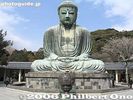
Exterior of Great Buddha, Kamakura
|
|
|
|

Daibutsu Great Buddha, Kamakura
|
|

Great Buddha, Kamakura
|
|

Daibutsu Great Buddha, Kamakura
|
|

Daibutsu Great Buddha, Kamakura
|
|
|

Offerrings to the Daibutsu.
|
|

Inside the Great Buddha (head portion)
|
|

Inside the Great Buddha (hands and lap)
|
|
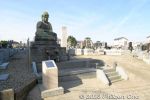
Kamagaya Daibutsu is Japan's smallest Great Buddha bronze statue. Height is 1.8 meter. It has amazingly survived since Nov. 1776 when it was commissioned by local merchant Okuniya Fukuda Bun'emon (大国屋福田文右衛門) to memorialize his
|
|

Kamagaya Daibutsu was made by sculptor Tagawa Shuzen (多川主膳) in Kanda, Tokyo. It's located in a local cemetery right near Kamagaya-Daibutsu Station on the Shin-Keisei Line.
|
|
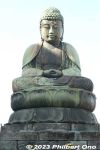
Kamagaya Daibutsu is Shakyamuni Buddha (Shaka Nyorai). The statue is still owned and maintained by the Fukuda family. It's a longtime symbol of Kamagaya, Chiba Prefecture. Free to visit.
|
|
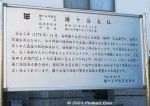
About Kamagaya Daibutsu. In 1972, it was designated as a Cultural Property of Kamagaya.
|
|
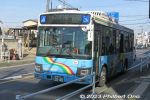
Buses to Kamagaya Daibutsu also run from Funabashi Station.
|
|
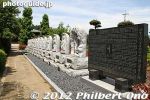
From the Jizo-do to the main Hondo Hall is this path lined with 13 Kannon/Buddha statues.
|
|
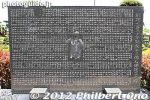
Donors for the 13 Kannon/Buddha statues.
|
|

Kannon/Buddha statues.
|
|
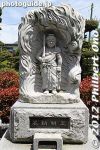
Fudo Myoo and all the other major Buddhist and Kannon figures are represented.
|
|
|
|
|
|
|
|
|
|
|
|
|
|
|
|
|
|
|
|
|

On the hillside between Omi-Takashima Station and Shirahige Shrine, there is a cemetery with 33 large stone buddhas. MAP
|
|

They are called the Kamogawa 48 Stone Buddhas. They were originally made in 1553 by Sasaki Rokkaku Yoshikata (佐々木六角 義賢), lord of Kannonji Castle in Azuchi in memory of his deceased mother.
|
|

Originally, there were 48 stone buddhas. Only 33 remain now. Thirteen of them were moved to Sakamoto in Otsu, and 2 were stolen. Although they stand upright, it's possible that they can fall on you, especially if you've been bad.
|
|

The stone buddhas are about 1.6 meter tall, made of granite.
|
|
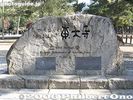
A World Heritage Site and one of Japan's most famous temples, Todaiji houses Japan's largest statue of the Buddha, a National Treasure. Temple was established about 1,200 years ago.
|
|

Path to Todaiji
|
|

Gate god
|
|
|
|

Todaiji Temple, Nara
|
|

Todaiji Temple, Nara
|
|

Todaiji Temple
|
|
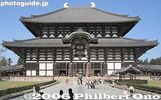
Todaiji Temple
|
|
|
|
|
|
|
|
|
|
|
|
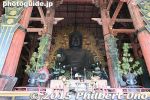
The Great Buddha in Nara.
|
|
|
|
|
|
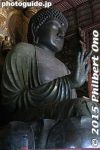
Great Buddha, Todaiji Temple, Nara
|
|
|
|
|
|
|

Great Buddha
|
|

Japan's largest Buddha statue in Todaiji. National Treasure.
|
|
|
|

Rear view
|
|
|
|
|
|
|
|
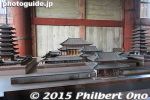
Scale model of the old Todaiji Temple.
|
|
|
|
|
|
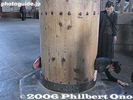
Crawl through a pillar
|
|
|
|
|
|
|
|
|